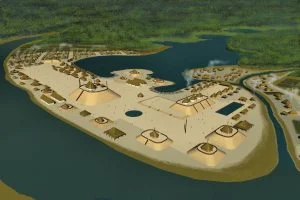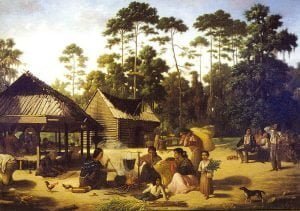The Natural Environment of Ocmulgee Bottoms
Beginning in the late 1500s and continuing through the late 1600s, European maps showed a large lake in central Georgia that received both the Ocmulgee and Oconee River. Its outlet was the Altamaha River, which the French called the May River. The memoirs of the commander of Fort Caroline, René de Laudonnière, wrote in his memoir that several expeditions which he dispatched in a northwestward direction from the fort, encountered a large shallow lake at the headwaters of the May. These expeditions continued northward across the lake in their canoes and then traveled up the Oconee River to the Kingdom of Apalache and then the Appalachian Mountains. No mention is made of the Ocmulgee River by Laudonnière, but it also appeared on later maps of the region, flowing into Lake Tama. Apparently someone, either French or Spanish did canoe northwestward across the shallow lake and travel up the Ocmulgee.






